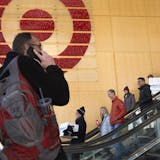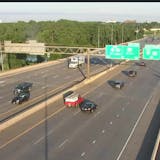The highly contagious and rapidly spreading coronavirus brought a major change in Twin Cities commuting behavior last week as motorists drove a lot less and those who did arrived at their destinations more quickly.
Research from the global traffic-tracking company INRIX found that speeds on metro highways and freeways were 25% faster during Wednesday's morning rush hour and 38% faster Wednesday evening when compared to the week before, when schools were shuttered and employees were encouraged to work remotely.
Even notoriously traffic-choked arteries such as the I-494 Bloomington strip, I-35W in Minneapolis and I-94 on both sides of the Lowry Hill Tunnel saw big performance improvements, said Brian Kary, MnDOT's director of traffic operations.
MnDOT's analysis of data collected from sensors and cameras placed along 400 miles of highways and freeways showed that on Tuesday, for example, motorists collectively logged 30 million miles, a drop of nearly 20% from the week before.
Fewer vehicles meant commuters encountered free-flow conditions more often than bumper-to-bumper traffic between 5 and 10 a.m. and between 3 and 7 p.m. In turn, that led to higher speeds and faster trips.
"Congestion was pretty much nonexistent," he said. "It looked like a weekend on a weekday."
What happened in the Twin Cities mirrored what happened in other U.S. cities. In gridlocked Chicago, average speeds during Wednesday's morning drive time were 77% faster when compared to normal. In traffic-choked Los Angeles, motorists moved 53% faster than normal, according to INRIX's analysis of commuting patterns in the 25 largest U.S. cities.
"Every major metro in the United States is now experiencing significant changes in average travel speeds during the peak commute hours due to COVID-19," said INRIX transportation analyst Trevor Reed.



